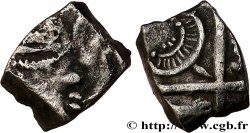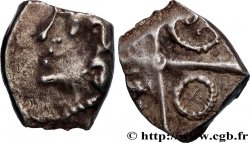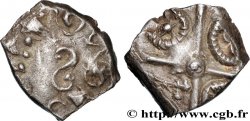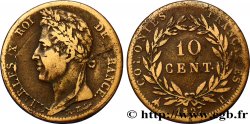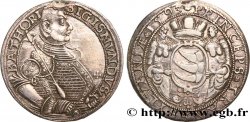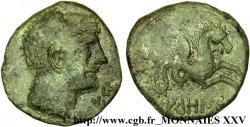bga_241317 - GALLIA - SOUTH WESTERN GAUL - RUTENI (Area of Rodez) Drachme “au sanglier”, tête avec chevelure en torsade
Not available.
Item sold on our e-shop (2011)
Price : 340.00 €
Item sold on our e-shop (2011)
Price : 340.00 €
Type : Drachme “au sanglier”, tête avec chevelure en torsade
Date: IIe-Ier siècle av. J.-C
Metal : silver
Diameter : 16 mm
Orientation dies : 3 h.
Weight : 2,15 g.
Rarity : R2
Coments on the condition:
Monnaie sur un flan un peu court avec un profile complet au droit et un sanglier avec la tête hors flan au revers. Style grossier et frappe molle, surtout au droit. Fine patine grise, sur un métal un peu poreux par endroits
Catalogue references :
Obverse
Obverse legend : ANÉPIGRAPHE.
Obverse description : Grosse tête à gauche avec les cheveux torsadés ; le tout dans un grènetis.
Reverse
Reverse legend : ANÉPIGRAPHE.
Reverse description : Sanglier à gauche entre deux annelets bouletés, grènetis.
Commentary
Cet exemplaire d’un style différent, se distingue des monnaies S. 440 et se rapproche plus de la monnaie précédente, avec la chevelure en torsade.
Le coin de droit est différent, et celui de revers aussi. Le style est plus grossier et la gravure est même un peu confuse au revers.
This example, of a different style, is distinguished from the S. 440 coins and is closer to the previous coin, with the twisted hair. The obverse die is different, and that of the reverse as well. The style is cruder and the engraving is even a little confused on the reverse.
Le coin de droit est différent, et celui de revers aussi. Le style est plus grossier et la gravure est même un peu confuse au revers.
This example, of a different style, is distinguished from the S. 440 coins and is closer to the previous coin, with the twisted hair. The obverse die is different, and that of the reverse as well. The style is cruder and the engraving is even a little confused on the reverse.








 Report a mistake
Report a mistake Print the page
Print the page Share my selection
Share my selection Ask a question
Ask a question Consign / sell
Consign / sell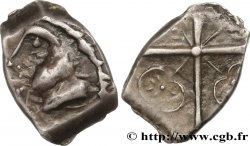
 Full data
Full data